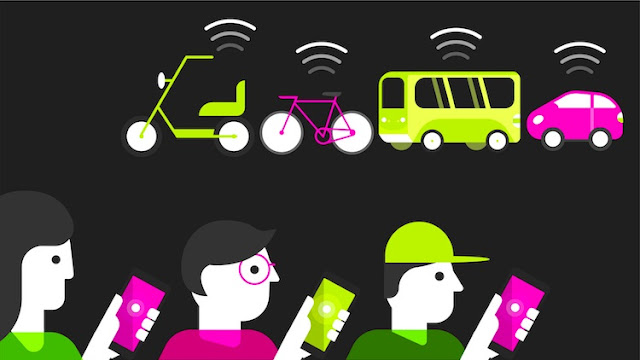Top Business Ideas in the Shared Mobility Niche

Top Business Ideas in the Shared Mobility Niche
It’s quite amazing to see improvements and innovations in transportation taking place in the modern era. Just when we think we have already tried everything possible with our vehicles, a startup comes along that proves us wrong. Despite the vast quantity of business ideas in shared mobility that have already been brought to life, there is still plenty of room for new ideas and new spins on existing ones. To give you a bit of perspective (and perhaps inspiration) in your endeavors, we have compiled a collection of some great shared mobility ideas that can be implemented and improved in your own way.
1. Carsharing
This business model is a significant model to the traditional car rent. With carsharing, you can find a car closest to you and start driving at any time. You forget all about paperwork, and fill out all information and agreements via an app or website. This is in stark contrast to rentals, which have limited business hours and are often located in places that are hard to reach without a personal vehicle. Furthermore, rentals usually require booking in advance, unlike the quick and flexible options provided by carsharing.
2. Ridesharing
Often confused with carpooling, ridesharing is a new trend powered by new social connectivity options. Carpools are customarily organized amongst friends, family, and colleagues, so you have a limited set of cars that you rely on for your transportation needs. On the other hand, ridesharing apps connect thousands of users, providing exponentially more options in terms of finding a ride to where you are going. If you have a fleet at your disposal carrying out regular trips, or just need to put them to good use, ridesharing can help you recoup losses and even help turn a profit.
3. Hired drivers
Although the niche of companies offering private drivers is already dominated by juggernauts like Uber and Lyft, passengers are more concerned with getting a quick and convenient ride than the name of a company, so there is plenty of room for competition. This service is sometimes called ridehailing and sometimes ridesourcing. Unlike a centralized taxi service, the model involves numerous drivers serving as independent contractors working in cooperation with the company. Users can usually check out basic information about their car and driver before placing an order.
4. Scooters and Bikes
Shared mobility is not limited to cars, as many of the aforementioned services for cars have already been adapted and applied to other forms of transportation like bicycles and scooters. If you live in a major city, you have probably encountered multiple locations where several units of a single bike stand at their post, waiting for someone to place an order through an app and drive away with them. This is just one example of the same sharing and rental processes being used beyond cars. You are free to come up with a unique take on non-automotive mobility.
5. Autonomous vehicles
Even though autonomous vehicles are not exactly used by mobility companies right now, the day when they are is just around the corner. Thus, you can win big later by starting to prepare now. When self-driving vehicles are finally made available on a global scale, businesses and startups can harness their advantages and improve profit margins that were normally eaten up by compensation to human drivers.


